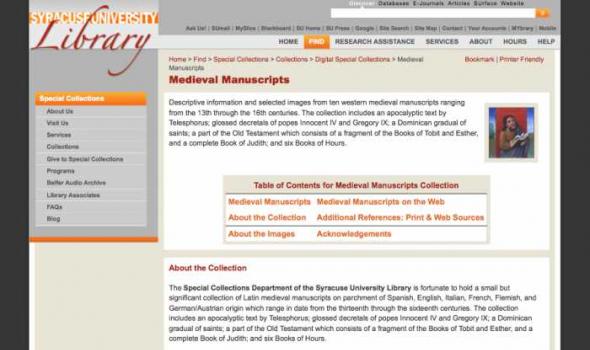Category: Arts & Humanities, Image, English, Syracuse University
Results
Street & Smith Dime Novel Covers Brief History of Street & Smith In 1855, when Francis Scott Street and Francis Shubael Smith bought The New York Weekly Dispatch , Street & Smith embarked on a publishing mission that remained remarkably prolific and profitable for over one hundred years. Street & Smith rapidly became a "fiction factory," producing a wide variety of popular literature, including dime novels, pulp magazines, books in series for juveniles, fashion and homemaking magazines, comics, and adventure stories. The company viewed fiction as a commodity, with Street & Smith editors dictating plots, character types, and other conventions to the firm's stable of writers.
The Ronald G. Becker Collection of Charles Eisenmann Photographs Using the Collection The collection of 1412 images can be accessed via the Library's CONTENTdm server and is fully searchable by keyword, subject, and image number. The item level inventory of the collection (in Excel) can help with formulating searches and sorting. About the Photographs The most common method of photography during the 1870s and 1880s was the wet plate albumen process. Albumen prints are characterized by a warm sepia tone that distinguish them from later silver gelatin prints. Eisenmann's images are noted for particularly being sharp, clear, and well-posed. The most common formats were cartes de visite and and cabinet cards.
Oneida Community Collection In 1960 Syracuse University Library acquired complete runs of the serial publications of Oneida Community and of its antecedents and branches, covering the span of years from 1837 until 1879. In 1983 the Library received a large collection of the surviving records of the Community. We are happy to be able to provide these additional primary documents for the scholars from Syracuse and elsewhere who have been coming to us for many years. Some Oneida Community documents have been digitized. Transcriptions are available online on the References page . About the Collection There have been several reasons for the Syracuse University Library to collect materials about Oneida Community and its antecedents and branches.
Medieval Manuscripts Descriptive information and selected images from ten western medieval manuscripts ranging from the 13th through the 16th centuries. The collection includes an apocalyptic text by Telesphorus; glossed decretals of popes Innocent IV and Gregory IX; a Dominican gradual of saints; a part of the Old Testament which consists of a fragment of the Books of Tobit and Esther, and a complete Book of Judith; and six Books of Hours. About the Collection The Special Collections Department of the Syracuse University Library is fortunate to hold a small but significant collection of Latin medieval manuscripts on parchment of Spanish, English, Italian, French, Flemish, and German/Austrian origin which range in date from the thirteenth through the sixteenth centuries.
Marcel Breuer Architectural Drawings and Sketches Using the Collection The collection of 668 images can be accessed via the Library's CONTENTdm server and can be browsed as well as being fully searchable by keyword or project title / subject. About the Collection Breuer's drawings are of particular interest to students, scholars, and researchers because, contrary to what might have been expected, Breuer was self taught as an architect and received no technical training as an architectural draftsman. His first ambition as a student at the Bauhaus was to be a painter or a sculptor. As an artist he had a great facility for freehand drawing throughout his life.
The Erie Railroad Glass Plate Negative Collection Using the Collection The collection of 709 images can be accessed via the Library's CONTENTdm server and is fully searchable by keyword, subject, and image number. The item level inventory of the collection in Excel can help with formulating searches and sorting. NOTE: both links will open new windows. About the Collection The Erie Railroad Company glass plate negatives are arranged by Erie subsidiary railroads in the states of New York, New Jersey, Pennsylvania, and Ohio. Mainline scenes come from all of the preceding states, as well as from Indiana and Illinois.


























